AccuCold FS407LBI7PLUS2ADA, ACR1151FS24LSTACKPRO, CM411L7PLUS2, FF511L7PLUS2ADA, CT66LPLUS2ADA User Manual
...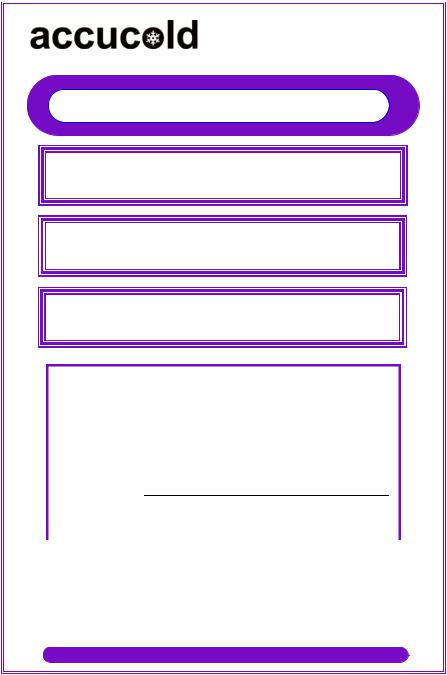
USE & CARE GUIDE
PLUS2 Series
REFRIGERATORS & FREEZERS FOR GENERAL PURPOSE STORAGE
PRO Series
REFRIGERATORS & FREEZERS FOR GENERAL PURPOSE STORAGE
MED Series
REFRIGERATORS & FREEZERS FOR GENERAL PURPOSE STORAGE
If you need service or call with a question, please have this information ready. We advise you to keep this Use & Care Guide in your possession.
Model: ___________ Serial number: _________________
Options added:
|
Date of purchase: |
|
Dealer: |
|
|||||
|
|
|
|
|
|
|
|
|
|
|
|
|
|
|
|
|
|
||
|
|
|
|
|
|
FELIX STORCH, INC. |
|
||
|
NOTE: A French version of this |
|
|
|
|
||||
|
|
|
|
ISO 9001:2015 registered |
|
||||
|
manual can be found |
|
|
|
|
||||
|
|
|
|
770 Garrison Avenue |
|
||||
|
online at accucold.com |
|
|
|
Bronx, New York 10474 |
|
|||
|
|
|
|
|
|
www.accucold.com |
|
||
|
|
|
|
|
|
|
|
|
|
|
|
|
|
|
|
|
|
|
|
|
|
|
0 |
|
|
|
|
|
|

Model Numbers
PLUS2 Models:
FF6L / FF7L / FF28LWH / FF511L / FF521BL / FFAR24L / SCR600L / FF590SSHH / FFAR10 / FFAR12W / FFAR121SS / PLUS2 Series
All-refrigerators with automatic defrost or frost-free operation
ACF48W / VT65ML / FS603 / FS407L / FS30L / FS24L PLUS2 Series
All-freezers
CM411L / CP351/ CT66L / S19LWH / CP133 PLUS2 Series
Refrigerator-Freezers
SP6DS / SP6DSSTB / SP6DS2D PLUS2 Series
Drawer refrigerators
PLUS2 all-refrigerators include digital thermostats, internal fans, and NIST calibrated thermometers.
PLUS2 refrigerator-freezers include internal fans (in the refrigerator compartment) and NIST calibrated thermometers.
PLUS2 all-freezers include NIST calibrated thermometers.
PRO Models:
FF6 / FF7 / FF28LWH / FF511L / FF521BL / FFAR24L / FF28LWH / SCR600L / FFAR10 / FFAR12W / FFAR121SS PRO Series
All-refrigerators with automatic defrost or frost-free operation
VT65M / FS603 / FS407L / FS30L / FS24L PRO Series
All-freezers with manual defrost operation
PRO all-refrigerators include digital thermostats, internal fans, and probe holes. PRO all-freezers include probe holes for user-provided monitoring equipment.
MED Models:
FF511L / FF521BL / FF7L / SCR610BL / SCR1156 MED Series
All-refrigerators with automatic defrost or frost-free operation
VT65ML / FS407L / FS30L / FS24L MED Series
All-freezers with manual defrost operation
MED all-refrigerators include digital thermostats, internal fans, and NIST calibrated temperature alarms.
MED all-freezers and refrigerator-freezers include NIST calibrated temperature alarms.
1

Table of Contents |
|
Model Numbers ......................................................................... |
1 |
Appliance Safety ....................................................................... |
3 |
Proper disposal of an old appliance ..................................... |
3 |
Installation Instructions ........................................................... |
4 |
Key Eject lock ....................................................................... |
4 |
Location Requirements ...................................................... |
5 – 6 |
Location ................................................................................ |
5 |
Recommended grounding method ....................................... |
5 |
Leveling your appliance ....................................................... |
6 |
When using the appliance .................................................... |
6 |
Energy-saving tips ................................................................ |
6 |
Appliance Care .................................................................... |
7 – 8 |
Defrosting ............................................................................. |
7 |
Cleaning the appliance ......................................................... |
7 |
Changing the light bulb ........................................................ |
8 |
Loss of power ....................................................................... |
8 |
Moving the appliance ........................................................... |
8 |
Temperature Selection and Monitoring .......................... |
9 – 13 |
Manual (dial) thermostat ...................................................... |
9 |
Digital thermostat ............................................................... |
10 |
Calibrated thermometer (PLUS2 models)........................... |
11 |
Probe hole port (PRO models)............................................ |
11 |
Calibrated thermometer/alarm (MED models) ............ |
12 – 13 |
Keypad Lock ........................................................................... |
14 |
Operation of Specific Models ................................................ |
15 |
Troubleshooting & Best Practices................................. |
16 – 17 |
Notes ....................................................................................... |
18 |
Limited Warranty .................................................................... |
19 |
2
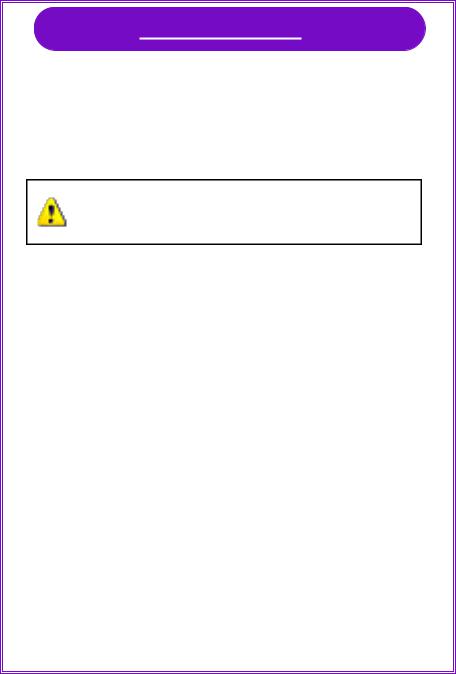
Appliance Safety
Your safety and the safety of others are very important to us.
We have provided many important safety messages in this manual and on your appliance. Always read and obey all safety messages.
You can be seriously injured or even killed if you don’t follow instructions.
Safety messages will tell you what the potential hazard is, how to reduce the chance of injury, and what can happen if the instructions are not followed.
IMPORTANT SAFETY INSTRUCTIONS
WARNING: To reduce the risk of fire, electric shock or injury when using your appliance, follow these basic precautions:
Plug into a grounded 3-prong outlet.
Do not remove ground prong, nor use a 3/2 adapter.
Do not use an extension cord.
Use care not to plug into outlets controlled by wall switches.
Disconnect power before servicing.
After servicing, replace all parts and panels before operating.
Use nonflammable cleaners.
Keep flammable materials and vapors, such as gasoline, away from appliances.
Use two or more people to move and install appliance.
NOTE: Drawer refrigerators are provided with anti-tip brackets. Always install prior to use.
Proper disposal of an old appliance:
Old appliances can represent a suffocation hazard to children.
Remove doors from your old appliance.
Leave shelves in place.
If an old appliance contains refrigerants, it must be recycled by a licensed service or disposal company.
3

Installation Instructions
Excessive Weight Hazard !
Use two or more people to move and install your appliance. Failure to do so can result in back or other injury.
ALLOW APPLIANCE TO SIT UPRIGHT FOR 24 HOURS BEFORE TURNING ON, TO ALLOW THE COMPRESSOR LUBRICANT TO DRAIN.
1.Remove packaging materials.
2.Remove tape and glue residue from surfaces before turning on the appliance. Rub a small amount of liquid dish soap over the adhesive with your fingers. Rinse with warm water and dry.
3.Do not use sharp instruments, rubbing alcohol, flammable fluids, or abrasive cleaners to remove tape or glue. These products can damage the surface of your appliance.
4.When Moving Your Appliance:
Your appliance is heavy. When moving the appliance for cleaning or service, be sure to protect the floor. Always pull the appliance straight out when moving it. Do not wiggle or “walk” the appliance when trying to move it because floor damage can occur.
5.Clean Before Using:
After you remove all of the packaging materials, clean the inside of your appliance before using it. See cleaning instructions in Appliance Care.
6.Some upright models have leveling legs. Level as necessary for best operation.
7.If your appliance has casters, after moving into place, lock the brakes on those casters supplied with brakes. Always unlock before moving the appliance for cleaning.
Key Eject lock (some models):
To lock or unlock the appliance, you must hold the key in the lock while turning. The lock is spring-loaded, so the key cannot be left in the lock.
If the key is lost, contact your dealer or SUMMIT APPLIANCE for a replacement. Always give the model and serial number of your appliance when requesting a replacement key. Keys for most models can be ordered online at www.summitappliance.com/support
4

Location Requirements
Keep flammable materials and vapors, such as gasoline, away from appliances. Failure to do so can result in fire, explosion or death.
Location:
IMPORTANT: Do not install the appliance near an oven, radiator, or other heat source, nor in a location where the temperature will fall below 40°F (5°C). Do not place in direct sunlight.
Check the strength of the floor before installing your appliance. It should hold the weight of a fully loaded appliance. Allow at least 4” (10 cm) of airspace at the top and on both sides of the appliance and also 4” between the back of the appliance and the wall. If the appliance is going to be placed next to a wall, leave extra space on the hinge side so the door can open wider than its width.
NOTE: Allow 4” (10 cm) clearance at the top and sides and a ¼” (0.64 cm) clearance between appliances. IF YOUR MODEL HAS THE LETTERS “BI”
IN THE SUFFIX, IT IS DESIGNED FOR BUILT-IN USE AND REQUIRES ONLY MINIMAL CLEARANCES EXCEPT AT THE BACK WHERE AT
LEAST 2” OF CLEARANCE SHOULD BE ALLOWED. ALL FF590, SCR610BL, AND ACF48W MODELS ARE ALSO BUILT-IN CAPABLE.
 Electrical Shock Hazard
Electrical Shock Hazard
Plug into a grounded 3-prong outlet.
Do not remove ground prong.
Do not use an adapter.
Do not use an extension cord.
Failure to follow these instructions can result in fire, electrical shock or death.
Recommended grounding method:
A 115 Volt (AC only) 60 Hz grounded electrical supply with a 15or 20amp fuse or circuit breaker is required. It is recommended that a separate circuit serving only your appliance be provided. Use outlets that cannot be turned off by a switch or pull chain. Do not use an extension cord.
5

Leveling your appliance (some upright models):
Locate the two front leveling legs that may be taped among the packing materials. (In many models these legs are already mounted into the underside of the appliance.)
1.Screw these legs into the front holes on the bottom of the appliance. The back of the appliance rests on two fixed supports. (Built-in models also have rear level legs that can provide more precise leveling).
2.Adjust the front legs just enough to lift the cabinet up off the floor.
Note: If your model is equipped with front rollers, the front legs should be lowered enough to lift the rollers off the floor to ensure the appliance does not roll forward when the door is opened.
3.Place a leveling tool on top of the appliance, first side to side, then front to back. Turn leg counter-clockwise to raise a corner. Turn leg clockwise to lower a corner.
4.Repeat Step 3 until appliance is level.
5.After appliance is fully loaded, recheck with level as in Step 3.
6.If your appliance is equipped with casters, the two front casters have brakes to prevent rolling. Keep brakes locked, and unlock for moving only.
When using the appliance:
In order to ensure proper temperature, you need to permit proper airflow in the appliance. Do not block off any air vents. If the vents are blocked, airflow will be hindered, and temperature and moisture problems may occur. Always position contents to allow some airflow between shelves or baskets.
Allow the appliance to cool at least 6 to 8 hours before adding contents. Allow 24 hours for temperature to stabilize.
NOTE: When the appliance is first started, the compressor will run constantly until the appliance is cooled. It may take 6 to 8 hours (or longer), depending on room temperature and the number of times the appliance door is opened. After the appliance has cooled, the compressor will turn on and off as needed to keep the appliance at the proper temperature.
For optimum temperature performance, it is recommended that this unit be at least 30% full during use. If you are only using this unit to store small loads, we recommend adding some water bottles or freezer packs to ensure temperature stability.
The outside of your appliance may feel warm. This is normal. The appliance’s design and main function is to remove heat from packages and air space inside the appliance. The heat is transferred to the room air, making the outside of the appliance feel warm. (In some models the condenser that gets warm is just inside the side walls, making these walls warm to the touch.)
ENERGY-SAVING TIPS
The more airflow provided around an appliance, the less energy it will use.
If your appliance requires manual defrosting, keep ice build-up to less than 1/2".
Keep doors open a minimum of time, and shut securely.
6

Appliance Care
Defrosting:
Refrigerator models listed in this manual defrost automatically. However, freezer models require manual defrosting. Before defrosting the unit, remove the contents of the freezer, then set the thermostat to OFF (the compressor will stop working). Leave the door open until ice and frost are completely melted. To speed up defrosting, you can place a container of warm water (about 125°F) into the cabinet. Soak up the melt water with clean toweling or a sponge and be sure the interior is dry before turning the thermostat back to its normal setting.
• NOTE: It is not advisable to heat the interior of the freezer directly with hot water or a hair dryer while defrosting since this can deform the cabinet interior.
NEVER USE A METAL OBJECT TO REMOVE ICE FROM THE
REAR WALL. IF NEEDED, USE A PLASTIC ICE SCRAPER.
Cleaning the appliance:
NOTE: To prevent the buildup of odors, clean the appliance about once a month. Follow the procedure below for cleaning:
1.Disconnect from power.
2.Remove any parts that can be taken out of the cabinet, such as drawers.
3.Using a clean sponge or soft cloth, hand wash, rinse and dry removable parts and interior surfaces thoroughly. Use a mild detergent in warm water. DO NOT use abrasive or harsh cleansers such as window sprays, scouring cleansers, flammable fluids, cleaning waxes, concentrated detergents, bleaches or cleansers containing petroleum products. DO NOT use harsh cleaning tools such as paper towels or scouring pads, as these can scratch or damage the surfaces of the refrigerator.
4.For stainless steel and painted metal exterior surfaces, use a clean sponge or soft cloth and a mild detergent in warm water. DO NOT use abrasive or harsh cleaners, or cleaners containing chlorine, as these can scratch or damage the
material. Using a soft cloth, dry thoroughly.
5.To help with removing odors, you can use a mixture of warm water and baking soda (2 tbs to 1 qt of water) to wash the interior walls.
6.After cleaning, replace all of the parts that were removed from the appliance.
7.The condenser coils, located on the back or behind the base grille, should also be cleaned regularly. This may be as often as every other month. Cleaning the condenser coils can help reduce how much energy the appliance uses. When the condenser coils are dusty or dirty, use a vacuum cleaner with an extension attachment.
8.After cleaning the appliance, plug in or reconnect power.
NOTE: For CSS Models (completely stainless steel), only use cleaners especially made for stainless steel.
7

Changing the light bulb (some models only):
NOTE: Not all appliance bulbs will fit your appliance. Be sure to replace the bulb with one of the same size, shape, base size and wattage. You can purchase bulbs from www.summitappliance.com/support
1.Unplug appliance or disconnect power.
2.Remove the light shield. Most models do not require tools.
3.Replace the light bulb with an appliance bulb of the same wattage. Replacement LED bulbs are available from our parts department.
4.Replace the light shield.
5.Plug in appliance or reconnect power.
Loss of power:
In the event of power loss, unplug the appliance. Once power is restored, allow 30 minutes for the refrigeration system to equalize. During this time, keep the door closed as much as possible.
Remember: A full appliance stays cold longer than a partially filled one.
Moving the appliance:
1.Remove stored items and tape shelves, drawers and trays in place.
2.Unplug the appliance.
3.Clean it thoroughly.
4.Tape the appliance shut and tape the electrical cord to the cabinet.
When you get the appliance to its new location, refer to the Installation Instructions and Temperature Selection sections for information on installation and setting the controls.
8
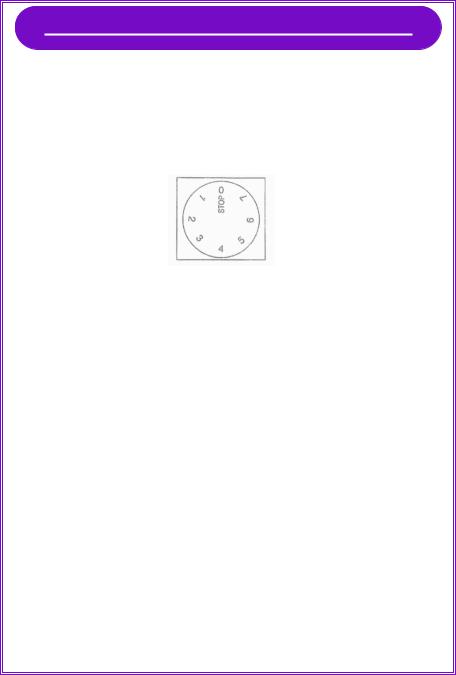
Temperature Selection and Monitoring
YOUR APPLIANCE MAY HAVE A MECHANICAL (DIAL) OR DIGITAL THERMOSTAT. DIAL INSTRUCTIONS ARE BELOW. DIGITAL INSTRUCTIONS ARE ON PAGE 10.
Manual (dial) thermostat (on some models):
Your appliance may be controlled with a thermostat knob located inside or in the rear of the unit, towards the right-hand corner. Turn the knob clockwise from the STOP (0) position toward the higher numbers for colder temperatures.
Setting the Temperature:
Higher settings on the knob (higher numbers) mean lower temperatures (colder) in all compartments of the appliance. The temperature inside a refrigerator may even drop below 32°F. Use higher thermostat settings only when required or recommended. When the ambient temperature is normal, we recommend a medium setting.
Changes of the ambient temperature affect temperature in the interior of the appliance, so keep this in mind when choosing the setting of the thermostat dial.
At STOP (0) position, the appliance does not operate (the cooling system is switched off), but the power supply is not interrupted.
The temperatures in the refrigerator and freezer compartments also depend on how often you open the door.
In all small refrigerators and freezers without interior fans, temperatures are coldest near the bottom, and occasionally near the rear. Place contents accordingly.
For optimum temperature performance, it is recommended that your unit be at least 30% full during use. If you are only using this unit to store small loads, we recommend adding some water bottles or freezer packs to ensure temperature stability.
9
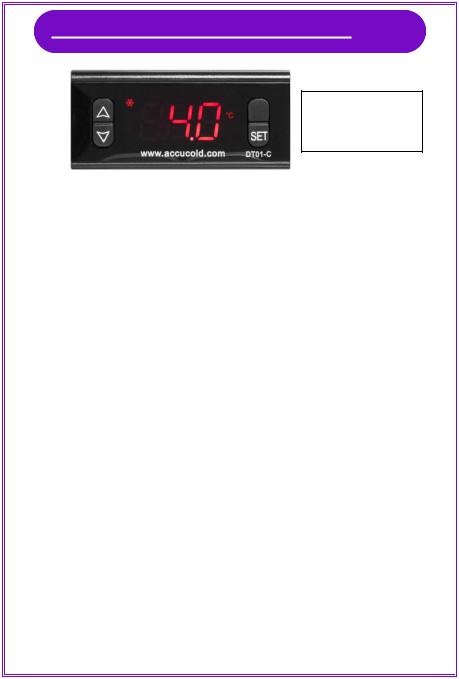
Temperature Selection & Monitoring, cont’d
Note:
Details may vary from image.
Digital Thermostat (standard on all-refrigerators, ACF48W models, and VT65MLADA models):
If you find it necessary to change the temperature setting for your digital thermostat, please refer to the following instructions.
How to Adjust the Temperature:
To see the SET POINT:
The default display for your digital thermostat is the internal cabinet temperature. To view the unit’s set point, push and immediately release the SET key. The display will flash, showing the set point value. If no other actions are taken in 6 seconds, the display will revert to the internal air temperature.
To change the SET POINT:
While the set point value is blinking, press the UP or DOWN arrow to change the set point to your desired temperature. Press the SET button again to exit the adjustment. The display will revert to the internal air temperature.
PLEASE NOTE: the temperature displayed on the digital thermostat is the internal air temperature. Your alarm/thermometer (installed on the left in the control panel) provides a temperature readout based on the buffered probe in order to better simulate the temperature of what is actually stored inside the unit (as opposed to the air temperature itself). As a result, these readings may not always display the same temperature reading.
NOTE: The minimum and maximum range of your thermostat is preset and locked so it cannot easily be accidentally moved outside of the recommended temperature ranges.
10
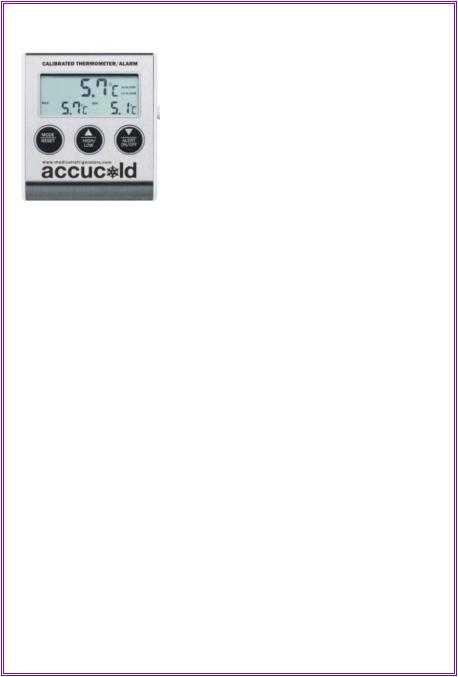
Calibrated thermometer (PLUS2 models):
This digital thermometer simultaneously displays maximum, minimum and current temperatures. The Max/Min feature monitors and stores the highest and lowest readings since the battery was inserted or since the RESET button was last pressed.
The temperature sensor, or probe, is enclosed in a glycol-filled bottle that is inserted into the location to be monitored, such as inside a refrigerator or freezer. The thermometer itself can be attached to the door of the unit with the magnet on the back, or it can be placed on a convenient table or shelf.
Power to the thermometer is supplied with one AAA lithium battery. When it is inserted correctly, all segments of the LCD display are temporarily activated. When the battery needs to be replaced, a battery symbol will flash on the display.
The temperature display can be switched between Celsius (°C) and Fahrenheit (°F) with a push of the °C/°F button. The display will alternate between refrigerator (probe) temperature and room temperature when you press the ROOM/FRIDGE button. Press RESET to clear the Max/Min temperature record.
See instruction pamphlet for more information about the thermometer.
Probe Hole/Access Port (PRO Series):
PRO series refrigerators and freezers include a 3/8” probe hole to allow users to install their own monitoring equipment. The probe hole is usually located in the upper part of the rear cabinet. If you are having difficulty locating the hole, refer to the product’s brochure on our website.
If installing your own thermometer, alarm, or data logger, we recommend using a device with a buffered temperature probe and placing the probe towards the center of the unit. This will help provide a temperature reading closest to the contents being stored inside your refrigerator or freezer. If your unit includes a fixed shelf with a probe holder (see details on page 12), we recommend placing the probe inside the extra slot in this shelf.
11
